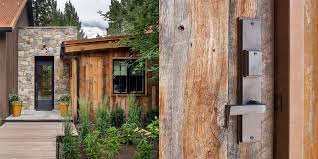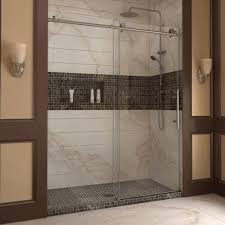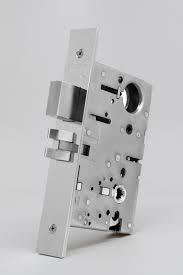Sliding Door Handles Amazon

Customer Questions & Comments See all discussions You are a: Quick Learner Handy Person Contractor Home Owner Distributor Friend Architect Landlord Professional Purchasing Agent Realtor Located in: Email: Subject: Post: Images: + add another image + add another image + add another image + add another imageA lockbox or key safe is a simple storage device about the size of an old iPod that can be attached to a door handle or wall. A key is locked into the container and then opened with a code that gets inputted manually. Like bike locks, lockboxes differ widely in strength, size, and dial format. The most common models are: (Sources: SP Works; marissa anderson, Flickr; Finding the right model of lockbox is all about striking a balance between strength and ease-of-use. consulted a number of expert locksmiths and found that dial models (though less convenient to open) are the hardest to break into. Pushbutton models are simple to program, but passcodes can be predictable and easy to guess, and an expert can break into most wheel models by fiddling underneath the gears with a small piece of metal.

Here are some well-reviewed lockbox options that are both sturdy and difficult to decode:This model can hold up to five-digit passcodes (the more digits the harder for a thief to break). Price: $39.00 Holds: 5 Keys Size: 6.8 x 3.2 x 2.7 inches Kidde AccessPoint Keysafe Pushbutton– This model is not a dial, but as long as you’re careful to keep your codes as random as possible it should be just as secure, and easier for guests to use–especially in the dark. Price: $27.00 Holds: 2 Keys Size: 4 x 2 x 2 inches GE Supra Dial Surface Mount Lockbox – A Supra-quality dial lockbox with great reviews that can be used for commercial purposes. Price: $25.00 Holds: 3 Keys MasterLock 5400D – The highest rated model on Amazon. Even though it’s a wheel model, customer reviews agree it will still get the job done. Price: $23.29 Holds: 5+ Keys Size: 9.2 x 5.2 x 1.9 inches Vault Locks 5000 – Large, heavy duty lockbox that can store multiple keys & key cards and also offers up to 10,000 different combinations.

Price: $24.99 Holds: 5+ Keys Size: 6.2 x 4.1 x 1.4 inches Lockboxes are already pretty secure (a sturdy lockbox can usually withstand about 45 minutes of banging with a hammer), but hosts should still be cautious and take steps to mitigate any potential risk: This is for those living in an apartment building or complex.
Bath Bomb Molds For SaleKeep your lockbox somewhere beyond the first gate or door, so that it isn’t accessible from the street.
Mazda 3 Tire Lock Key This means either attaching the lockbox to the side of the house, the backyard fence, the garden, or even to the house or apartment of a trusted neighbor down the road/hallway.
Wedding Dress Shopping EcardsIn fact, some people go as far as to hide their box under stealth containers, like a fake rock in the yard.

If you live an urban area with a lot of foot or car traffic, then don’t worry too much about being discrete. A good lockbox takes a lot of loud effort to break into, and for burglars without locksmith experience, it would be no more efficient nor subtle than simply breaking down the door. Lockboxes are installed with either screws or a metal loop around a door/railing. While attaching your lockbox to a solid wall takes more time and equipment (normally an electric screwdriver), it’s also more secure than looping the box around the door handle like a padlock. The metal loops are usually weaker and easy enough to break with a set of construction tools. Harsh weather conditions like extreme cold, snow, or rain, can jam or freeze a lockbox and prevent it from opening. In most cases this can be prevented by buying a flip-open cover for your lockbox. Most customer complaints about lockboxes revolve around people accidentally locking themselves out of the box before inputting a passkey.

This kind of blunder can usually be avoided by leaving your guest clear, specific instructions about using the box. If it’s a recurring problem, invest in a lockbox that doesn’t lock unless a key has been inputted (here’s an example), and consider leaving a backup or emergency key with a neighbor. It sounds a little childish for a tech-savvy microentrepreneur, but if you hide your key in a good location that hits the perfect balance between easy-to-describe and hard-to-find, it can be a viable option. A lot of people hide a key as a back-up plan in case they can’t depend on any of their neighbors to hold a spare key, or they don’t want to bother installing a lockbox. As a result, there’s a whole industry dedicated to key disguise, including fake rocks and fake sprinklers that can be placed in nondescript locations in the front yard. The best hiding places are the unexpected ones: If you have a garden – Use a planter, bush, or even a fountain as your hiding spot.

Backyard gardens accessible by a side gate are good because they’re off the main street. If you have a tree – Try tucking your lockbox either behind the tree or in a branch where you don’t think it’ll fall. Be careful not to place it somewhere your guests will have to work hard to try to access. If you have a porch – If there’s any space under it that’s usually a safe bet. You can even attach the lockbox to the bottom of one of the porch stairs. Basket hanging plants or any plant in a pot are a great camouflage for key sets and lockboxes – the more leaves and coverage provided the better. If you have a lawn – Fake sprinklers are great in lawns because they’re subtle, but also easy to find if you know what you’re looking for. Remember to hide within reason. If a key is so well hidden that a guest can’t find it, then it’s as good as lost. Pulling this off mainly requires a good set of instructions on where to find the key. Include a vivid description of the spot, and try to trace the path from the porch of your house to the key’s hiding place.